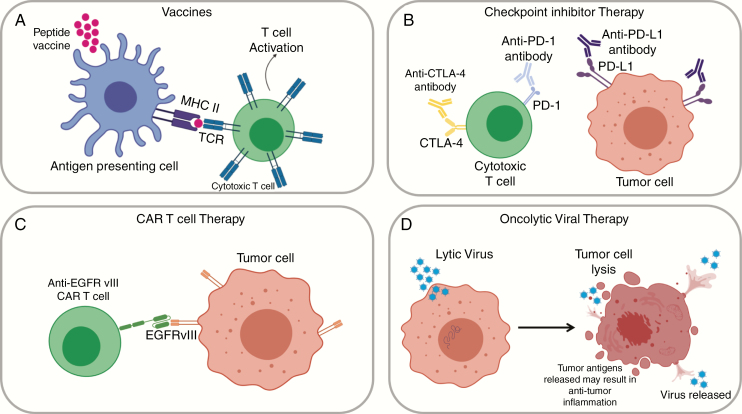Fig. 1.
Immunotherapy concepts for glioblastoma (GBM). A, Vaccines can be peptide/DNA based or cell based. Their goal is to promote antigen presentation and T-cell infiltration. Shown here is a peptide vaccine, which may encompass both broad GBM antigens and patient-specific antigens. B, Checkpoint inhibitor therapy relies on antibodies to inhibit immune-checkpoint molecules. Programmed cell death protein 1 (PD-1) and cytotoxic T lymphocyte antigen 4 (CTLA-4) are expressed on T cells and promote self-tolerance in healthy tissues. In GBM, this mechanism is exploited by tumor cells that express programmed death ligand 1 (PD-L1). Immune-checkpoint inhibitors bind to these molecules and limit T-cell inhibition. C, Chimeric antigen receptor (CAR) T-cell therapy uses genetically engineered T cells to target tumor-specific or associated antigens. CAR T-cell activation does not rely on MHC-dependent antigen presentation, and efficiently targets surface antigens, such as epidermal growth factor receptor variant III (EGFRvIII). D,) Viral therapies use both lytic and nonlytic viruses to kill tumor cells and induce an immune response. These viruses may directly kill tumors cells by lysis or encode enzymes that convert prodrugs into cytotoxic chemotherapies. Figures were created with BioRender.com.

